Last Updated on: 8th December 2024, 06:54 am
Just 90 minutes by bus from Tbilisi, Sighnagi feels like a world away. Located atop a hill in Georgia’s eastern Kakheti region, Sighnagi is synonymous with two things: scenery and wine. In the following Sighnagi guide, we’ll cover the best things to do and see in Georgia’s most picturesque town.
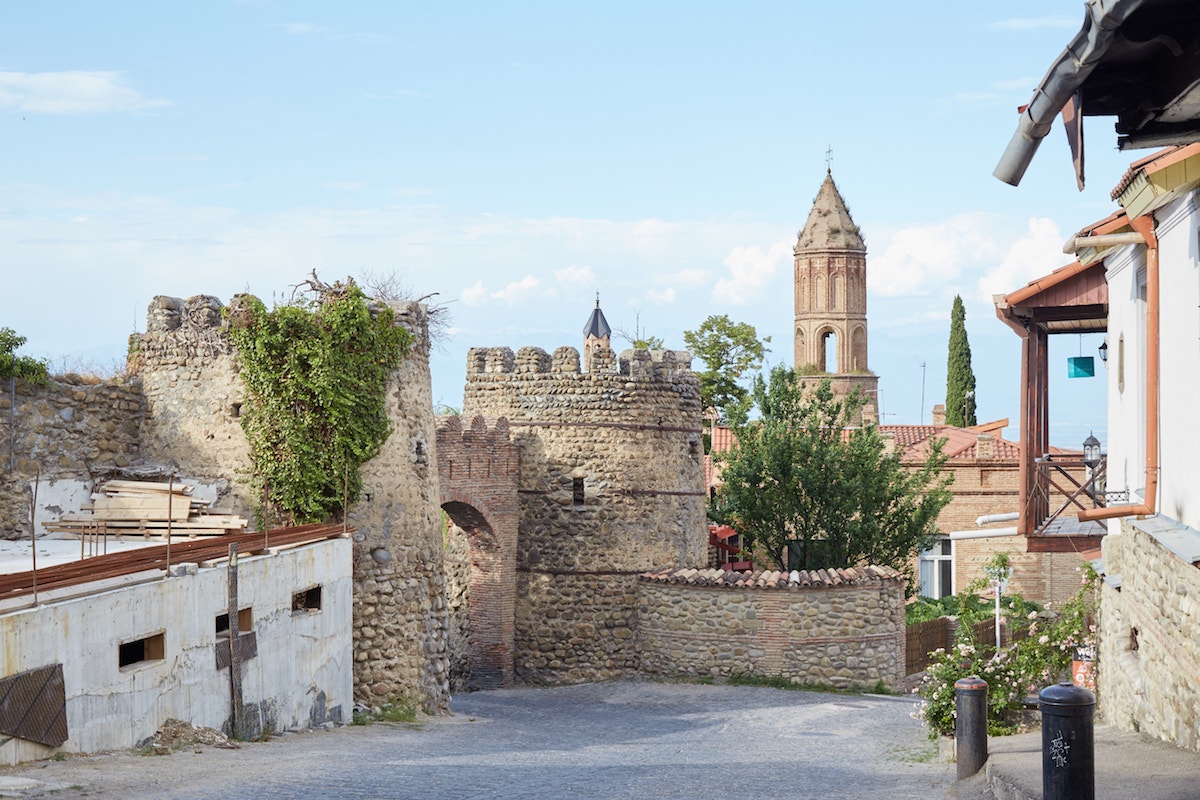
While the landmarks of the city center can be seen in a single day, at least one night is recommended. With extra time, you can soak up the town’s peaceful atmosphere at a relaxed pace, while also being able to hike over to Bodbe Convent, the resting place of one of Georgia’s most important saints.
Central Sighnagi Guide
Given Georgia’s remarkably long history, Sighnagi was established rather recently. The town was founded in the 18th century as a defensive base from which to repel invasions from the east, mainly Dagestan.
But in times of peace, Sighnagi quickly became an important trading center and home to numerous merchants and craftsmen. Presently, the town maintains an air of tranquility, with its defensive walls making for nothing more than nice scenery.
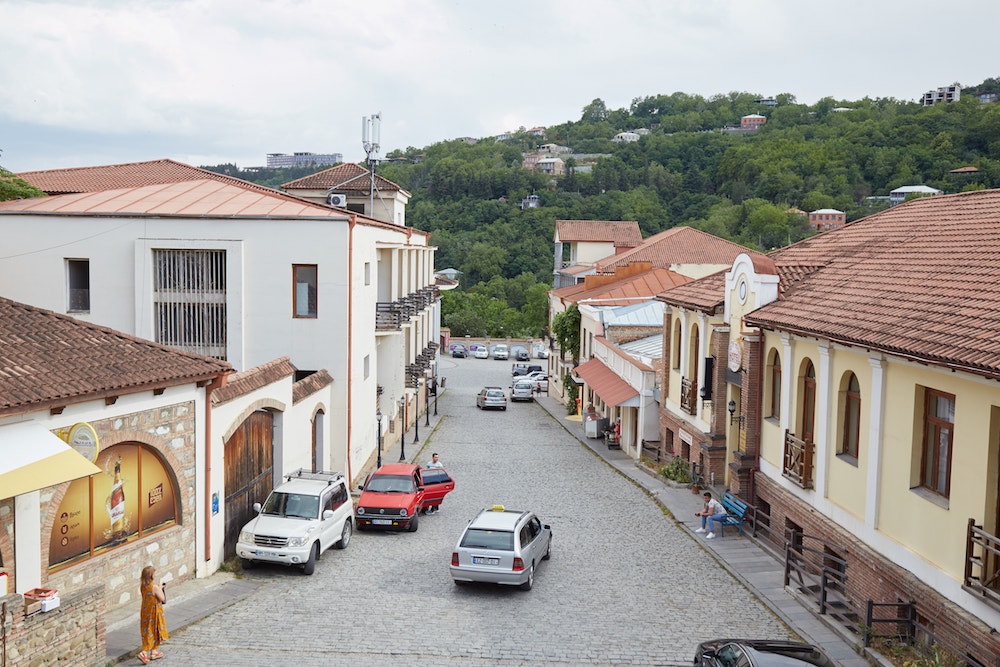

Sighnagi arguably has the most ‘European’ feel of any town in Georgia. Many of the old buildings were refurbished in 2007, and it’s since become a popular town for wedding shoots.
While the town center only has a handful of attractions, be sure to dedicate some time to aimlessly wandering around the quiet cobblestone streets.
St. George's Church
St. George’s church can be seen from nearly all over Sighnagi, and its bell tower has become a symbol of the city. But surprisingly, upon getting up close, the church complex is a lot smaller than you’d expect!
It’s just one of many churches named after St. George, a Roman soldier of Greek Cappadocian origin who refused to renounce his Christian faith.
Though the Georgians themselves call their country Sakartvelo, it was often referred to as ‘Gurjia’ by neighboring countries, due to the locals’ strong devotion for the early Christian martyr. And the name has stuck ever since.
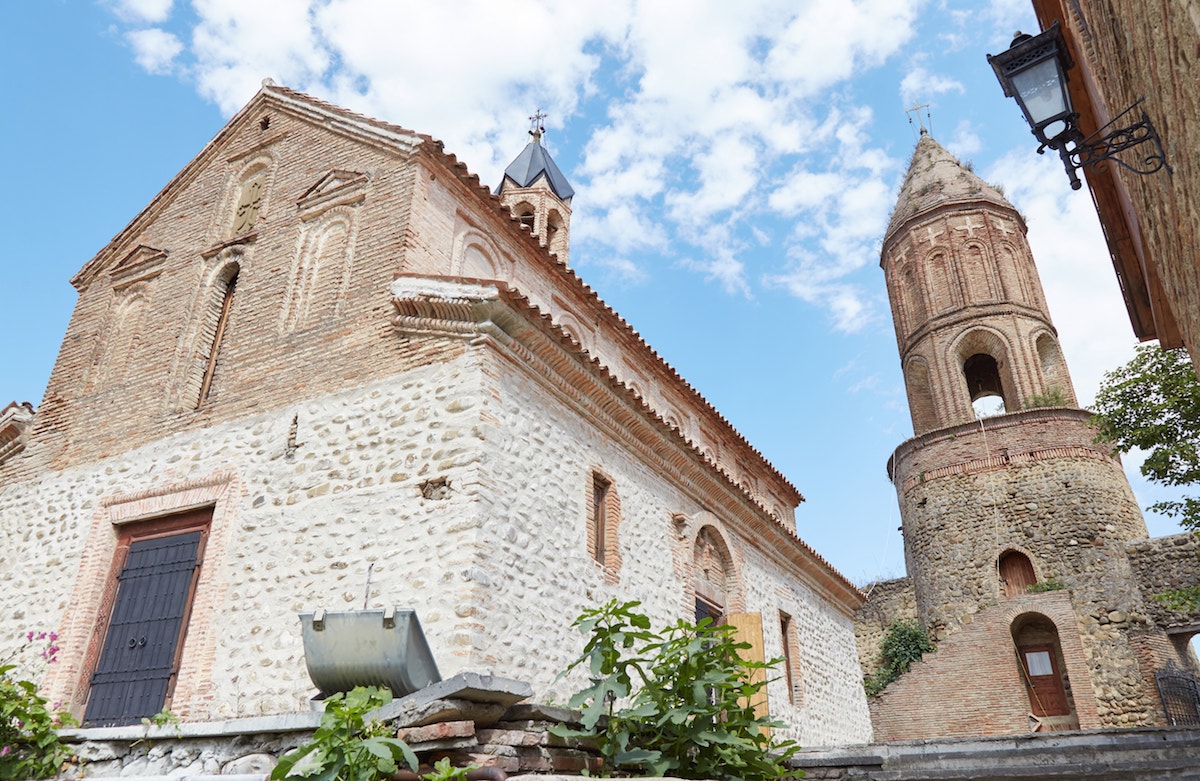
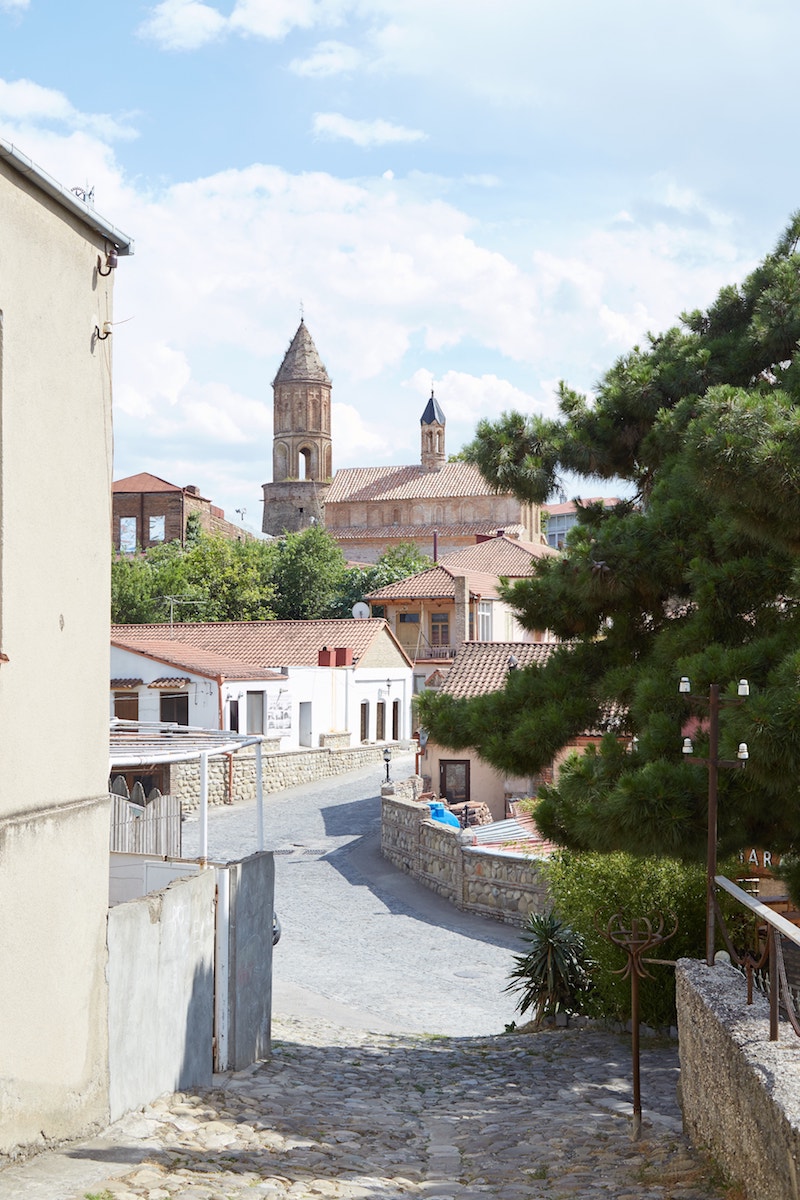
The main church’s interior is rather basic and all in all, there’s not a whole lot to see around the complex. But conveniently, the church is an easy walk from the city walls and nearby towers.
The City Walls
Not far from St. George’s church, you should see a sign pointing you in the direction of the path to the old city walls. All in all, the walls stretch out to 4.5 km in total, containing as many as 28 lookout towers.
They were erected around 1772 by King Erekle II, though different sources tend to disagree on exactly which king and year.

As you’d expect, the walls provide amazing views of rural Kakheti down below. And it’s interesting to see how huge the walled portion of Sighnagi is in relation to its cozy town center.

You’ll come across several towers with modern staircases built into them them, allowing you to climb up top and take in the views. But before you can get very far, the accessible portion of the walls suddenly comes to an end.


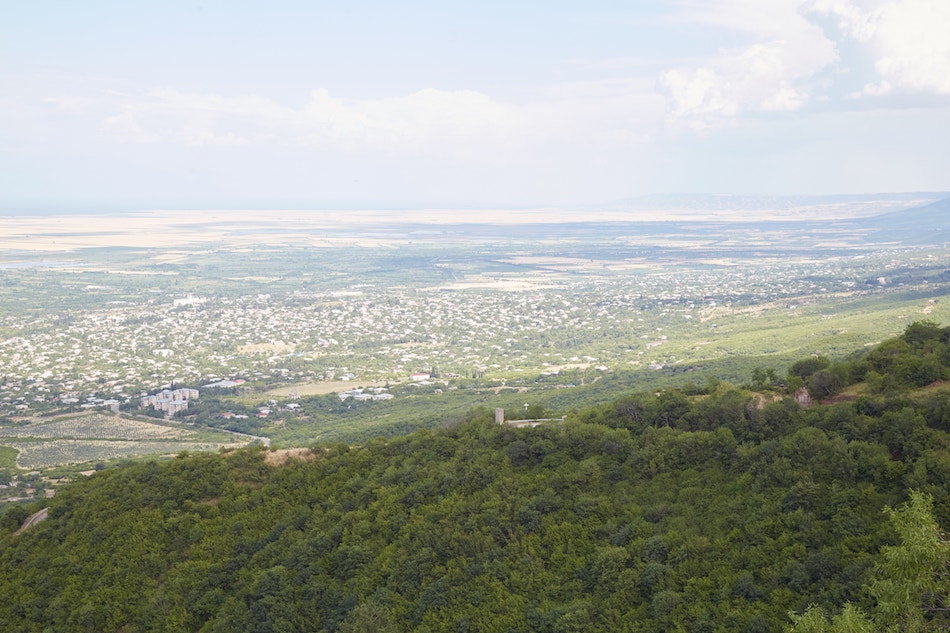
Despite being able to see so much more of the walls in the distance, I was unable to keep walking past the last tower. After checking from all angles and determining that there was no way to access the rest of it, I had no choice but to turn back the way I came.
Hopefully, the entire 4 km route will open up to the public someday.

St. Stephen's Church
The other famous church in Sighnagi is that of St. Stephen. While also small, this church is completely unique, having been built right in the middle of one of the circular lookout towers.
As such, it can be hard to find, as it looks more like a tower than a church from the outside. From the little square outside the Kabadoni Hotel, you can find it by taking one of the uphill paths toward Okro’s Wine Restaurant.

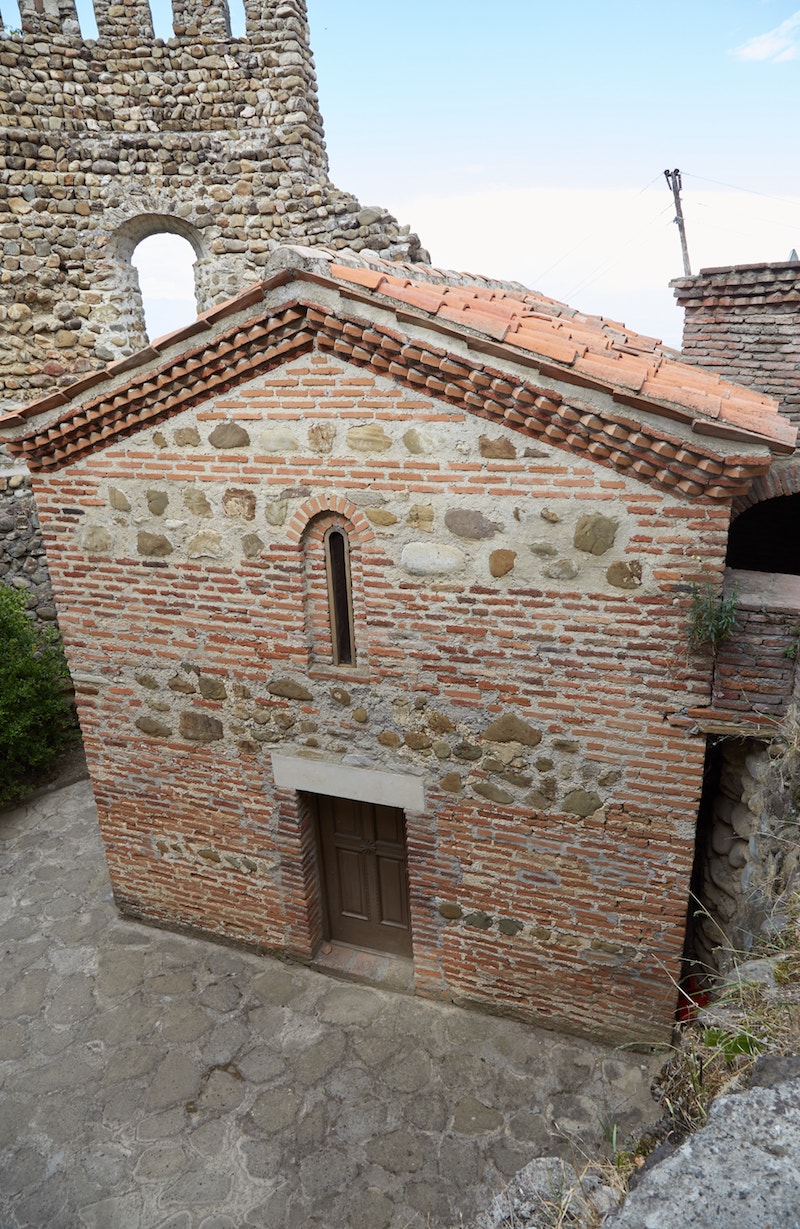
You can walk around the tower for great views of the town center, while you’ll have to descend the staircase to enter the small church itself.
A woman out front will ask you for 2 GEL for entry. While the Wikivoyage entry for Sighnagi claims it’s a scam, I’m certain the person who asked me for money was working for the church. Anyway, it’s just 2 GEL.
The church is dedicated to St. Stephen an early Jewish Christian who, accused of blasphemy in Jeruslam, became one of the religion’s first martyrs.
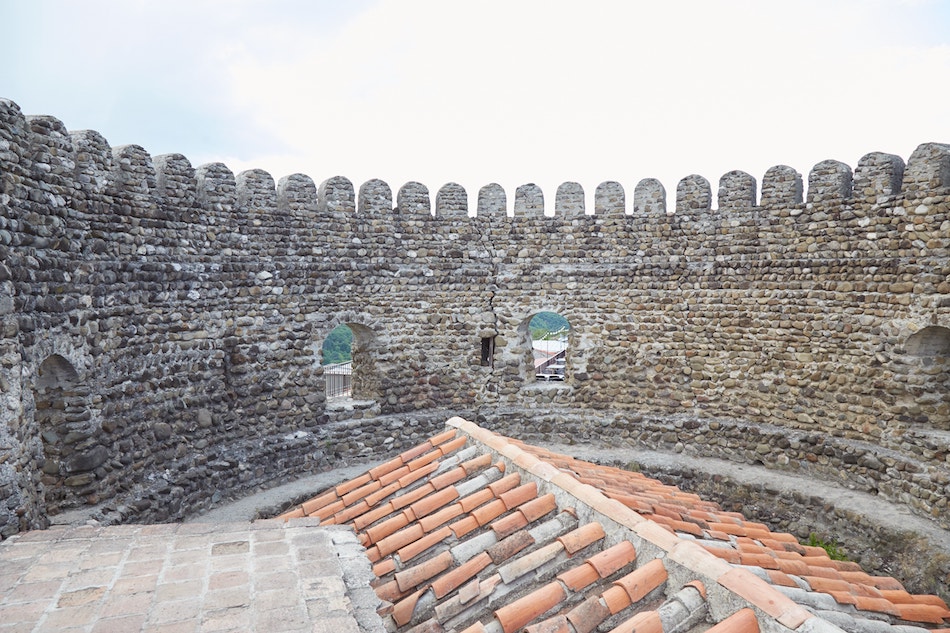
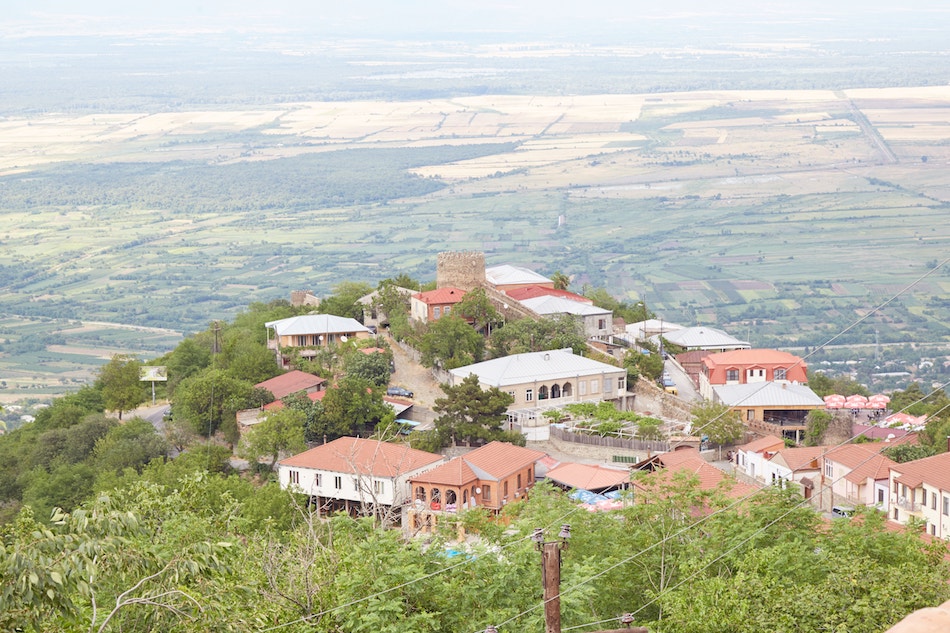
Wine Tasting
Sighnagi and the entire Kakheti region are well-known for their wine. Accordingly, one of the top activities to do in Sighnagi is wine tasting. At one of the various wineries throughout town, you can sip on different types of local wine while looking out at the gorgeous countryside.
While prices vary, expect to pay roughly 20-30 GEL for the experience.
My visit to Sighnagi took place at a strange time when the country had just opened up for domestic tourism, but the international borders were still closed due to the coronavirus pandemic.
I was probably the only foreign visitor in town at the time, so the local wineries (and most restaurants) remained closed.
But from my research, the two with the best reviews seemed to be Okro’s and Cradle of Wine Marani.


Sighnagi Museum
Another COVID closure during my trip was the Sighnagi Museum. It’s said to house ancient artifacts dug up throughout the Kakheti region, including the Paleolithic era. There are also some paintings on display by a local artist.
Located in the town center, it’s surely worth a quick stop should you happen to find it open.
Visiting Bodbe Monastery
Even without its scenery and its wine, Sighnagi would remain a popular town for Georgian visitors. Why? Because it’s the final resting place of St. Nino, the woman credited with converting the country to Christianity in the 4th century AD.
Her tomb is situated within the Bodbe Monastery to the east of town. While some people hire a taxi, it’s an easy and scenic walk from the town center.
The Walk There
Bodbe Monastery is just about 2.7 km from central Sighnagi, with the walk there only taking 30-40 minutes. While you’ll mostly be walking along the road, it’s not nearly as bad as it sounds.
The road sees little traffic, and you’ll be rewarded with excellent views of the town center from across the valley. (I even noticed a zipline company which takes people from one side to the other!)
There are plenty of road signs pointing you in the direction of Bodbe, while just following Google Maps or Maps.me is pretty straightforward as well. Just be sure to follow the signs for Bodbe and not St. Nino’s Spring, which you can access later from the monastery itself.
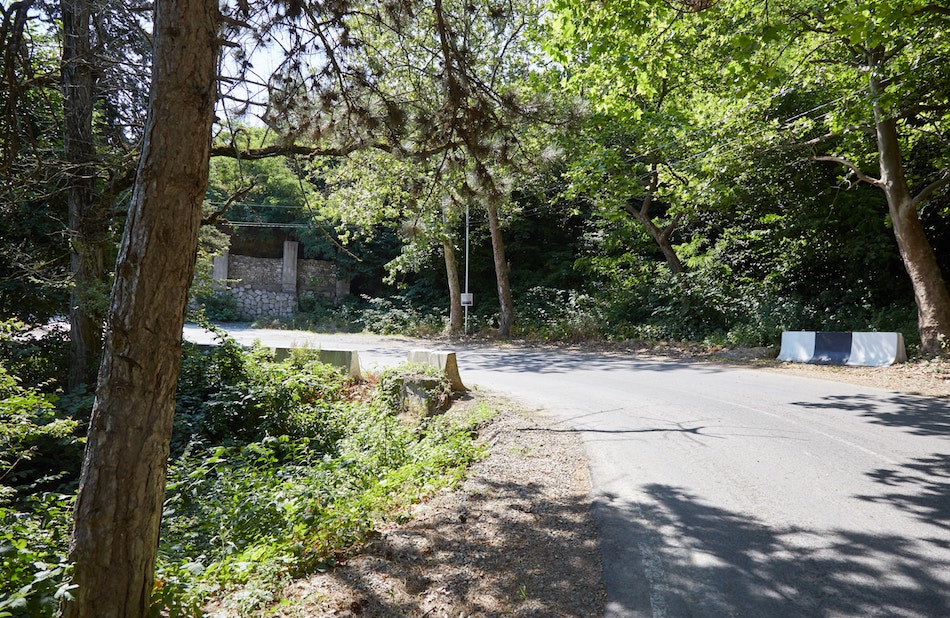

The Monastery
As mentioned above, St. Nino, who lived in the 4th century, chose to spend the rest of her days here after successfully converting the country to Christianity (learn more here).
While a small, humble church was built by her grave shortly after her death, Bodbe Monastery wasn’t established until the 9th century.
It then saw major remodeling in the 17th century after it was pillaged by the Persian Safavids. While the monastery flourished during the time of the Russian Empire, it was turned into a hospital during Soviet Times.
And now in the 21st century, new structures are still being added.

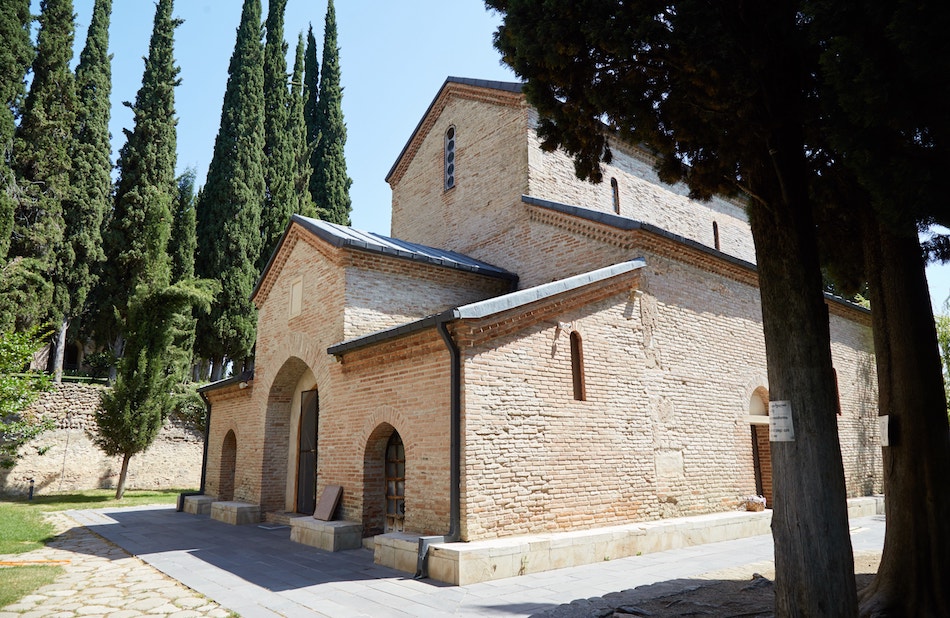
The original church (also known as the Church of St. George) is a three-nave brick basilica which dates back to the monastery’s founding. And it’s in here that St. Nino is buried, though her grave was entirely blocked off during my visit.
Just next to the church, meanwhile, is an attractive belfry which dates to the same time period. Clearly, both buildings have seen more recent renovations.
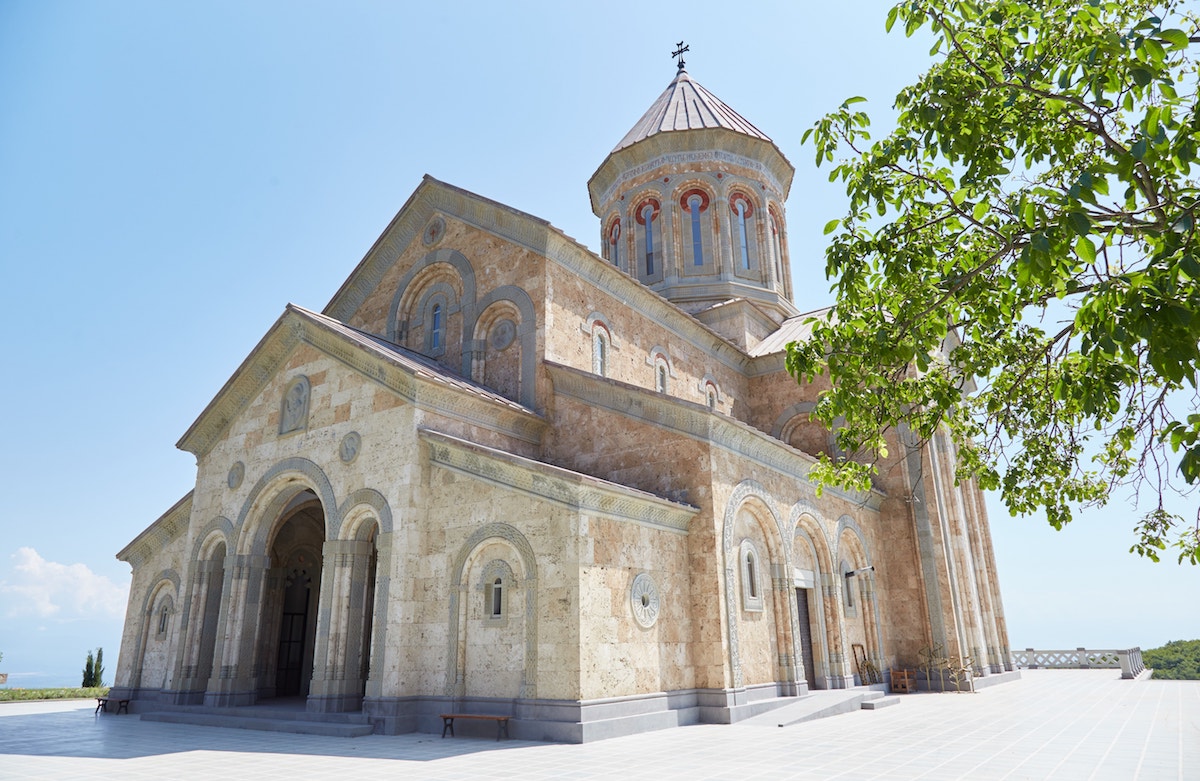
Overlooking the valley is the brand new Church of St. Nino. So new, in fact, that they were still busy painting the frescoes during my visit!
From the outside, it’s an attractive building that closely resembles traditional Georgian architecture. You can only tell how new it is once you get up close.
A local woman told me that it was commissioned by a Sighnagi family who also commissioned Sameba Trinity Cathedral in Tbilisi, though I haven’t been able to verify this from other sources.

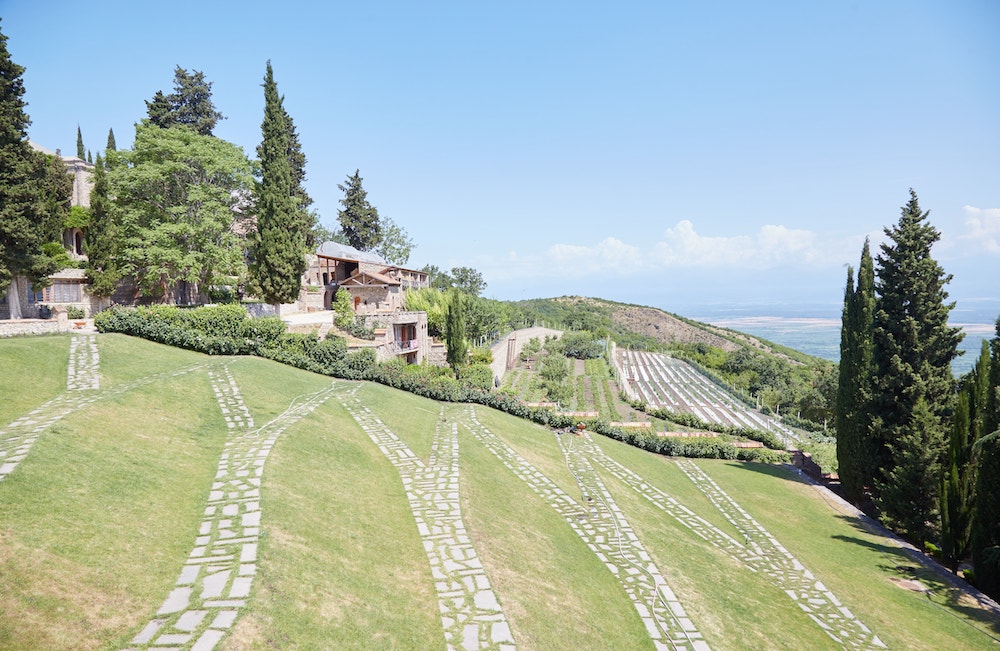
St. Nino's Spring
If you’ve done a fair amount of traveling throughout Georgia, you’ll know that holy places and holy water go hand in hand. And Bodbe is no exception.
According to legend, natural spring water suddenly emerged from the area during St. Nino’s time in the 4th century. And ever since, the spring has remained an important pilgrimage spot for local Christians.
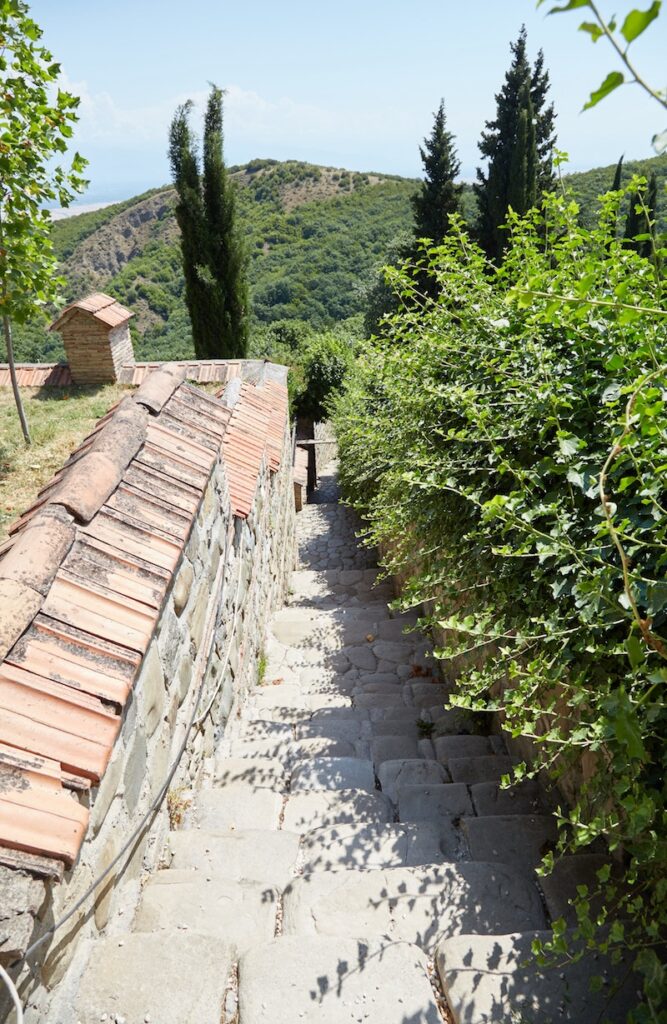

Provided you’re not too tired from the walk over from town, be sure to make the trek down to the spring, about 15 minutes away from from the main monastery complex.
Follow the signs at the monastery leading to a descending staircase. You’ll then find yourself on a tranquil and secluded forest path. With only one way to go, don’t worry about getting lost.

There are two main chapels constructed around the natural water source. People visit the first one to the right to entirely submerge themselves in pools of cold water, which is believed to have healing properties.
Changing into a special white tunic provided by the church is required before taking a dip.
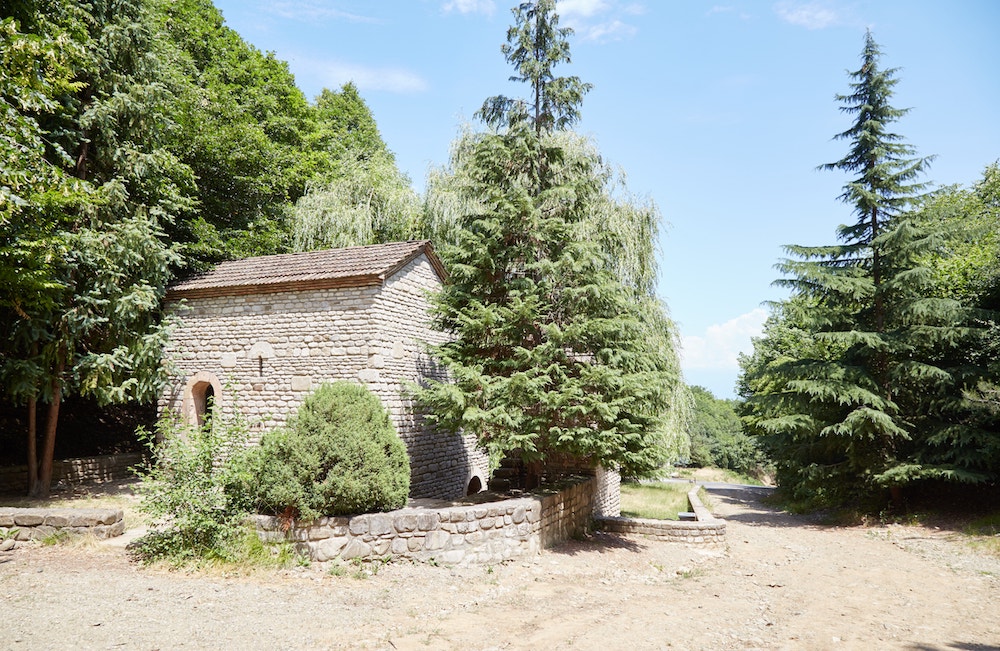
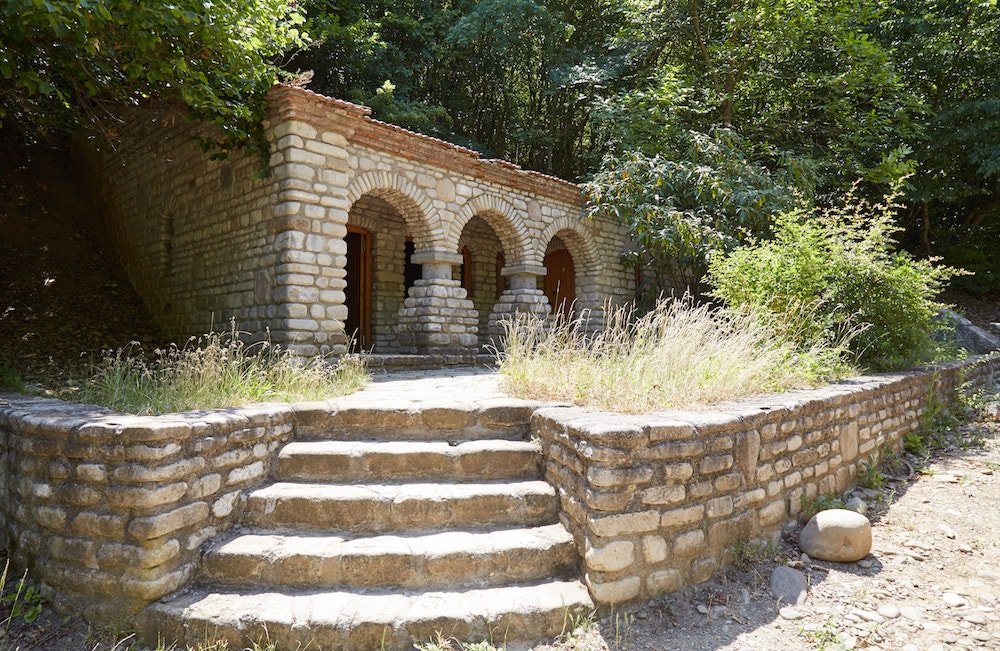
I opted for a simpler option – filling up my water bottle with the sacred spring water and relaxing under the shade. While I can’t attest to any miraculous healing powers, the water sure did taste fresh.
After finishing one bottle, I filled it up again to prepare for the long walk back to central Sighnagi.
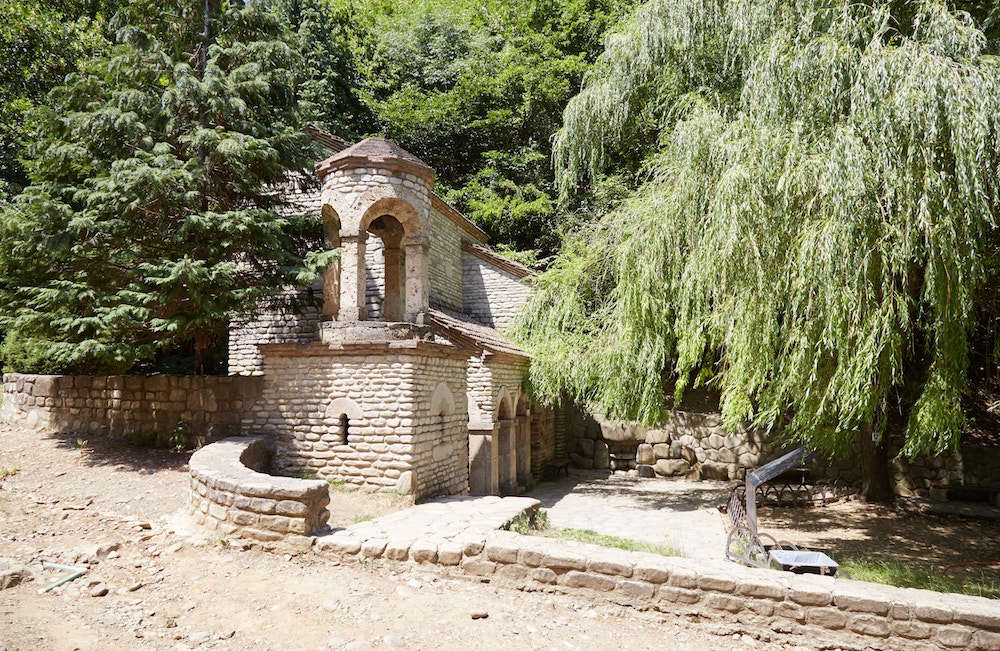
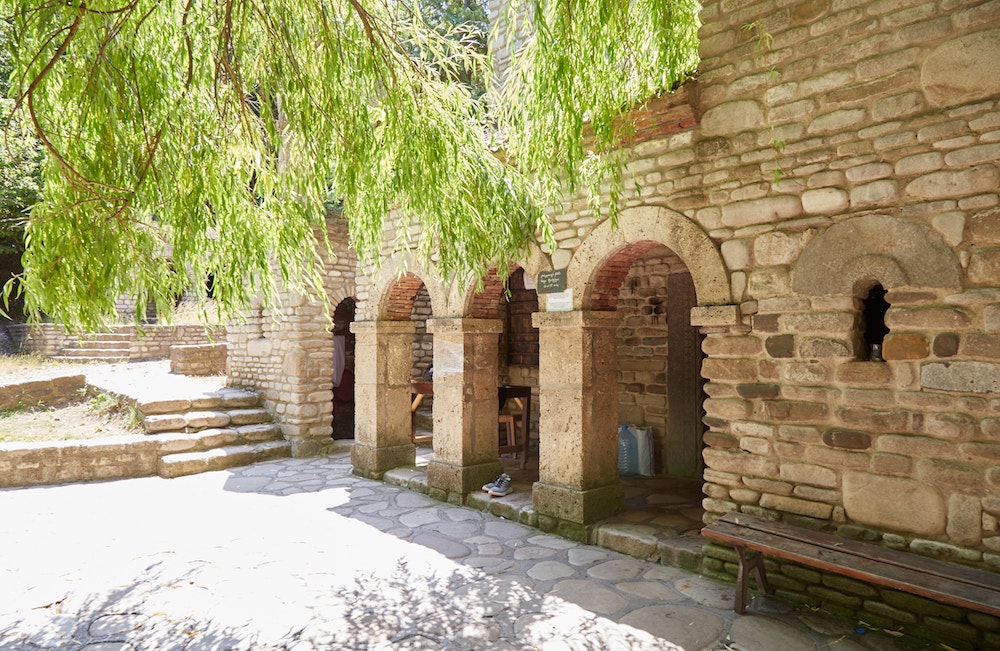
Additional Info
Sighnagi seems to be one of the few places in Georgia that you CAN’T access from Tbilisi’s Didube Station. Instead, you’ll need to go to an alternative bus terminal in Samgori in the southern part of town. You can reach it by either taxi or metro.
While transportation is in the form of a typical minibus (marhsrutka), the route follows a schedule and you won’t have to wait for the vehicle to completely fill up. The departure times from Samgori are 07:00, 09:00, 11:00, 13:00, 16:00, and 18:00.
The ride from Tbilisi to Sighnagi only lasts around 90 minutes. Sighnagi’s bus terminal is right behind the main square, though the bus might drop you off on a nearby road. It doesn’t matter, though, because everything in the town is walkable.
Be sure to download the Maps.me app before your visit. While Google contains most Sighnagi locations on their map, it’s not very accurate and, despite how small the town is, you could end up getting lost.
Maps.me is much more accurate and will come in handy for finding your hotel.
I stayed at a place called Apartment Giorgi that I would recommend to budget travelers. As the name suggests, it’s very close to St. George’s Church, but be sure to look at Maps.me for the exact location, as there’s no signage out front.
I stayed in a basic but clean and comfortable private room. While the bathroom was technically shared, I was the only guest at the time so I had it to myself.
There are great views from the dining area, and you can expect some complimentary wine upon your arrival. While I’d planned to eat out somewhere, I found nearly all the restaurants in town to be closed during my visit due to the pandemic. Despite my last-minute request, the owner kindly went ahead and prepared me dinner.
It cost around 25 GEL and, while not that cheap for Georgia, the portion size was HUGE.
Wherever you stay, Sighnagi is such a small town that you can’t really go wrong with location.

Pin It!
